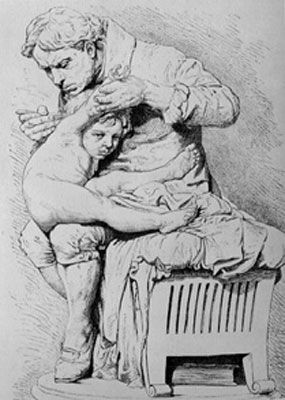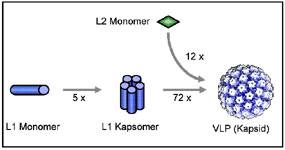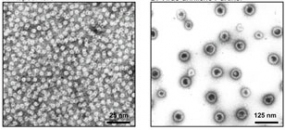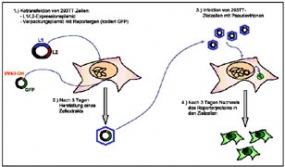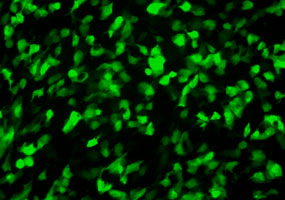Our group
Current projects of our group
- PANHPVAX: Phase I clinical trial for prophylactic HPV vaccine
- Cross-protective HPV Vaccines
- Re-engineering nano particle HPV prophylactic vaccine based on minor capsid protein L2
- HPV L2 cross-protective vaccines
- Thioredoxin scaffolds for therapeutic vaccination
- Developing an L2-based prophylactic vaccine against HPV-related skin diseases
- High-throughput pseudovirion-based neutralization assay (HT-PBNA)
Papillomaviruses induce benign and malignant tumors
Papillomviruses infect humans and many vertebrates. These infections can be completely asymptomatic but they could also result in skin warts or genital warts. Under certain circumstances infections with papillomaviruses can lead to the development of cancer. One major aim of vaccine development is to provide protection against infections by papillomaviruses to prevent development of cancer.
Prophylactic vaccines
So called prophylactic vaccines induce antibodies which are proteins of the immune system. These antibodies recognize and bind to virus particles that enter the body. This hinders entry of the viruses into the cells and thus the infection.
Besides the development of papillomavirus vaccine strategies we are interested to study the functions of the structural proteins L1 and L2 in the course of the viral life cycle. With the help of VLPs we are able to investigate interactions of the viruses with the cellular receptor. The L2 protein plays a central role in the packaging of the viral genome into the capsids. By packaging heterologous DNA into capsids we are able to produce so called pseudovirions. With these we can detect virus-neutralizing antibodies in the sera of immunized animals but also in human sera. In addition, pseudovirions allow to study the host range of the papillomaviruses.



